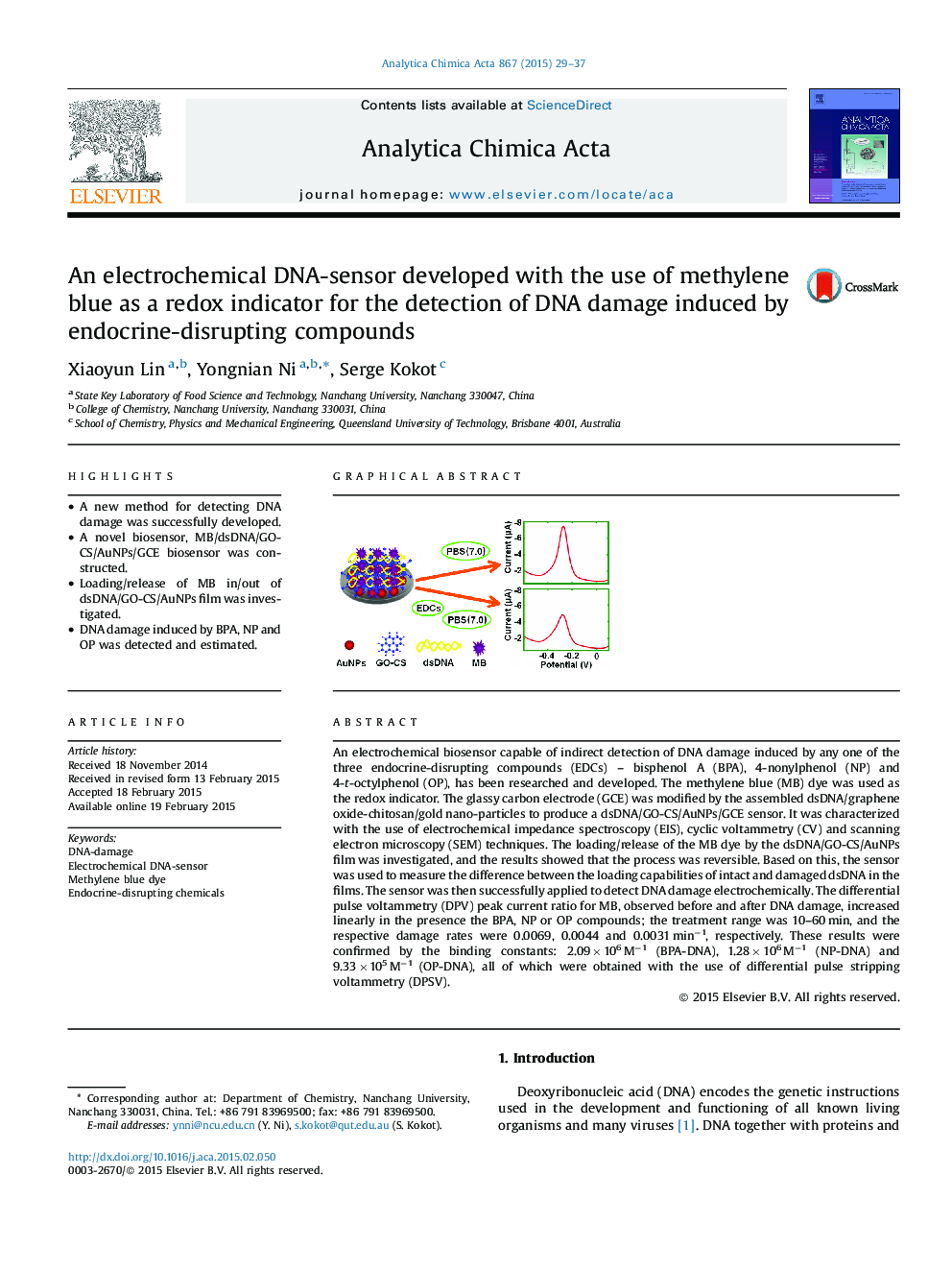| کد مقاله | کد نشریه | سال انتشار | مقاله انگلیسی | نسخه تمام متن |
|---|---|---|---|---|
| 1163629 | 1490965 | 2015 | 9 صفحه PDF | دانلود رایگان |

• A new method for detecting DNA damage was successfully developed.
• A novel biosensor, MB/dsDNA/GO-CS/AuNPs/GCE biosensor was constructed.
• Loading/release of MB in/out of dsDNA/GO-CS/AuNPs film was investigated.
• DNA damage induced by BPA, NP and OP was detected and estimated.
An electrochemical biosensor capable of indirect detection of DNA damage induced by any one of the three endocrine-disrupting compounds (EDCs) – bisphenol A (BPA), 4-nonylphenol (NP) and 4-t-octylphenol (OP), has been researched and developed. The methylene blue (MB) dye was used as the redox indicator. The glassy carbon electrode (GCE) was modified by the assembled dsDNA/graphene oxide-chitosan/gold nano-particles to produce a dsDNA/GO-CS/AuNPs/GCE sensor. It was characterized with the use of electrochemical impedance spectroscopy (EIS), cyclic voltammetry (CV) and scanning electron microscopy (SEM) techniques. The loading/release of the MB dye by the dsDNA/GO-CS/AuNPs film was investigated, and the results showed that the process was reversible. Based on this, the sensor was used to measure the difference between the loading capabilities of intact and damaged dsDNA in the films. The sensor was then successfully applied to detect DNA damage electrochemically. The differential pulse voltammetry (DPV) peak current ratio for MB, observed before and after DNA damage, increased linearly in the presence the BPA, NP or OP compounds; the treatment range was 10–60 min, and the respective damage rates were 0.0069, 0.0044 and 0.0031 min−1, respectively. These results were confirmed by the binding constants: 2.09 × 106 M−1 (BPA-DNA), 1.28 × 106 M−1 (NP-DNA) and 9.33 × 105 M−1 (OP-DNA), all of which were obtained with the use of differential pulse stripping voltammetry (DPSV).
Figure optionsDownload as PowerPoint slide
Journal: Analytica Chimica Acta - Volume 867, 31 March 2015, Pages 29–37